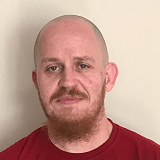lexapro 20
Transmission electron microscopy (TEM) is a common technique for studying nanomolecular structures that cannot be resolved using traditional light microscopy. Compared with SEM (scanning electron microscopy) TEM provides images of cross-sections of a target subject and is suited to the study of objects such as organic tissue and crystalline lattices.
Bright-field and dark-field TEM are two of the main types of transmission electron microscopy that are available for researchers working in the field of life sciences.
.jpg)
Image Credit: Elizaveta Galitckaia/Shutterstock.com
The difference between the two techniques is simple: they utilize different electron populations to provide their images. Both techniques can be useful for differing reasons.
Bright-field TEM
Put simply, bright field TEM provides images with a dark/light contrast between different parts of a structure that are being imaged. The aperture is used to select the unscattered (transmitted) electrons, whilst the scattered electrons are blocked.
In images produced by bright-field TEM areas with crystalline or high mass density appear dark, allowing for the precise structure being studied to stand out. Bright-field images are the most common images produced by transmission electron microscopy.
Dark-field TEM
Dark-field TEM is the inverse of bright-field TEM. The scattered electrons are selected, with the unscattered electrons are excluded by the aperture. Thus, the area around the sample being examined will appear light, rather than dark. Whilst dark-field TEM is not as commonly used as bright-field TEM, it can have distinct advantages over images produced using that technique.
Advantages and disadvantages
Like most techniques and processes that are available for scientific research, both these techniques have their advantages and disadvantages, celexa memory loss which should be understood by any researcher looking to use them for their studies.
Bright-field TEM advantages include:
- Enhanced contrast of the image
- The common and widely accepted technique
- Suitable for most types of structure
However, bright field images have their disadvantages. Problems can occur with contrast (which can be remedied by a smaller aperture) and they are not suitable for crystalline structures that are too small or “drowned” out of view.
Consequently, dark-field imaging can be used to address these problems. As the scattered electrons are selected by the aperture, the aforementioned crystalline structures can be imaged much more easily and features such as the crystal lattice itself, crystal defects, dislocations, stacking faults and particle/grain size can be studied.
If the bright field image is not clear enough, dark-field images can provide more detail. It can be said that this is analogous to the difference between electron and light microscopy.
Due to the low noise that is produced by dark-field images, one area of research that has recently employed dark-field imaging and benefitted from it is the study of inorganic nanoparticles, which require high contrast and clarity of image which bright field techniques have difficulty providing.
Which method should researchers use?
The choice between bright field and dark-field TEM comes down to the different structures that are being studied and the level of contrast required for the effective study of these structures/molecules.
Researchers should be trained and confident in the use of both and understand the advantages and disadvantages of each method. Both techniques are useful in the fields of analytical chemistry and life sciences.
Sources
Findlay, S.D. et al. (2010) Dynamics of annular bright field imaging in scanning transmission electron microscopy Ultramicroscopy Vol. 110 Issue 7, pgs. 903-923
https://doi.org/10.1016/j.ultramic.2010.04.004
Klein, N.D. et al. (2015) Dark Field Transmission Electron Microscopy as a Tool for Identifying Inorganic Nanoparticles in Biological Matrices, Anal. Chem. Vol 87. Issue 8 pgs. 4356-4362
https://doi.org/10.1021/acs.analchem.5b00124
Last Updated: Jan 17, 2020

Written by
Reginald Davey
Reg Davey is a freelance copywriter and editor based in Nottingham in the United Kingdom. Writing for News Medical represents the coming together of various interests and fields he has been interested and involved in over the years, including Microbiology, Biomedical Sciences, and Environmental Science.
Source: Read Full Article
